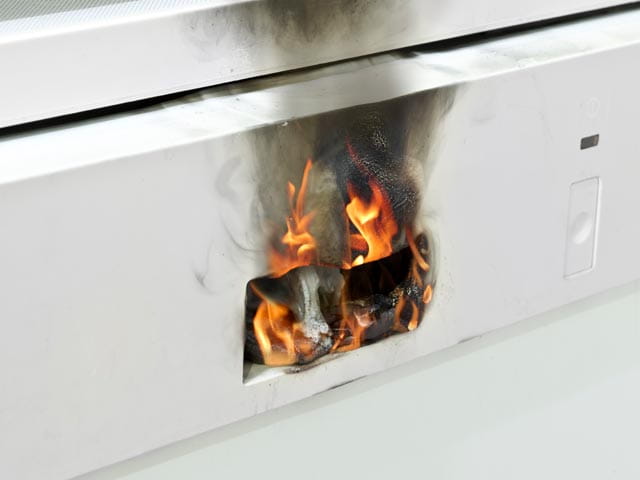为什么缺乏EMC统一标准

由参与专家
Steve Hayes
Harmonized standards are those that have been published in the Official Journal of the European Union (OJEU) for a specific European directive. They provide manufacturers with a presumption of conformity against the directive should their product be compliant to them.
To the frustration of many manufacturers, the rate of listed EMC harmonized standards has dried up, resulting in very few new EMC standards being published in the OJEU and a lack of uncertainty on which standards to apply to their products. This paper explores the issues for manufacturers and presents some options.
What's the Issue with Standards?
总的来说,EMC标准由国际电工委员会(IEC)或国际标准组织(ISO)等国际机构编写。当这些标准被投票时,相应的欧洲标准组织(CEN和CENELEC)计算欧洲选票,并且提供作为统一标准的积极投票,增加了另外的附件以突出标准与基本要求之间的联系它符合相应的指令。一旦完成,修订后的标准就会向委员会发布Ojeu。
可以说,制造商已经依赖于统一标准,忽视其其他职责(例如对其产品对指令涵盖的现象进行风险评估)以及指令的基本要求。法律符合基本要求。统一标准是自愿的,只是满足某些法律义务的便捷方式。
詹姆斯艾略特案的影响
In recent years there has been criticism by the European Court of Justice regarding the process described above in terms of the standards process. This stems from a very unfortunate incident regarding another CE Marking Directive (construction products) (Case C-613/14, James Elliot Construction Ltd v Irish Asphalt Limited). The conclusion of this legal case highlighted that the European Commission write the Law, then effectively sub-contract out all the technical requirements and place this responsibility in the hands of independent standards bodies who have no legal background or mandate to write standards in this way.
因此,需要更强调的是CEN / CENELC在候选协调标准的前面所写的附件,这些标准更明确地定义了哪种测试,方法和限制提供了符合要求的推定指示。
这会如何影响标准?
虽然解决了解艾略特案件所识别的问题的过程可能似乎是直截了当的,但EMC问题要复杂得多。法律要求不能含糊不清,但这是EMC免疫测试和具有不同性能评估的评估的世界,这可以变化和非常主观。
采取几乎所有EMC标准的绩效标准,这些标准在存在干扰信号存在下有关预期的(或允许的)性能。Manufacturers, test labs and conformity assessment bodies have all been applying a very generic interpretation on what is meant by performance criteria A, B and C. This is due to a generic statement in the standards that typically says ‘product is/isn’t allowed degrade in performance below a level defined by the manufacturer and what a user may reasonable expect’.
很明显,这种类型的陈述导致从一个测试实验室或制造商到另一个测试实验室或制造商的可能性,并且不提供法律解释所需的确定性。
想象一下以太网路由器的制造商为例。销售手册可以宣传具有1GB / s的数据速率。在存在干扰信号(模拟故意发射器)的情况下操作,数据速率可能会降 - 这通常是辐射免疫测试期间的经验的情况。一个制造商可能会决定,因为他们的产品广告具有1GB / s数据速率,这应该在所有条件下维护。同样,另一个制造商可以决定干扰的来源将是移动和暂时性的,因此它非常可接受的是,数据速率冷落到500MB / s,因为当移除干扰器时,它恢复到原始性能。
Clearly in the example above this type of information is not presented to the consumer to make an informed decision on what product to purchase and is left to suffer with poor performance throughout the life of the product if they choose wrongly.
在候选人协调标准的前面需要更加强调附件,这些标准更明确地定义了哪种测试,方法和限制提供了指令基本要求的符合性的推定
Steve Hayes
未来该何去何从?
The Commission now wants to correct these wide ranging interpretations of ‘acceptable performance’ and is looking to remove the generic performance statements from all harmonized standards. Whilst the intention may be honorable for the Commission and desirable for all consumers, changing the standards to reflect this would be complex, expensive and very time-consuming.
Since many standards are written by international committees, if the European Commission wants to change the performance criteria in all EMC standards they will differ from the international ones, causing administrative challenges for manufacturers to keeping up to date with twice as many standards. Equally changing an international standard to meet the needs of a European market will take many years, if at all, and may result in applying two different sets of performance criteria.
As a result the Commission and the standards bodies are discussing and negotiating what to do. At the same time, the world is moving on and manufacturers continue to approve and ship product – so how is this being achieved?
完全简单地,该指令没有说明必须使用统一的标准 - 它只是指出,如果产品符合统一的标准,那意味着有替代的符合途径,提供了一致性的推定。
A manufacturer needs to do a little more work (risk analysis), but in essence if a standard has been approved and published as either a European or International standard, then a consensus has been reached and the standard is likely to be considered as ‘state of the art’. Assuming that the standard covers the phenomena of the directive, then the risk analysis can be used to justify why this new standard(s) has been used, and why the essential requirements of the directive has been met.
Conclusions
It would appear that the intention of the Commission to improve and tighten up the interpretations of harmonized standards may actually have completely the opposite effect. Manufacturers need immediate solutions to get their products to market, and cannot wait for lawmakers to convince the standards world to modify their standards, for what many see as just a European issue.
Manufacturers will work their way through the law and take action to ensure that what they have done is legal and technically correct, turning their back on the harmonized standards route to conformity. Once this is process is established, there will be no need to revert back to the old way of doing things and the reliance on the OJEU will disappear.
Through its network of engaged experts and advisory services, Element provides advice and guidance regarding the route to conformity for the EMC and many other Directives and Regulations. It should be noted that whilst the information described herein relates to EMC, other routes to conformity such as Type-Examination through its Notified Body are also available. Some directives, such as the Radio Equipment Directive (RED), mandate the use of a Notified Body where there are no harmonized standards.
View more articles aboutMore Sectors
通过介绍与您的相关文章Nucleus
Featured on Nucleus
EMC Principles made easy
02/14/17





